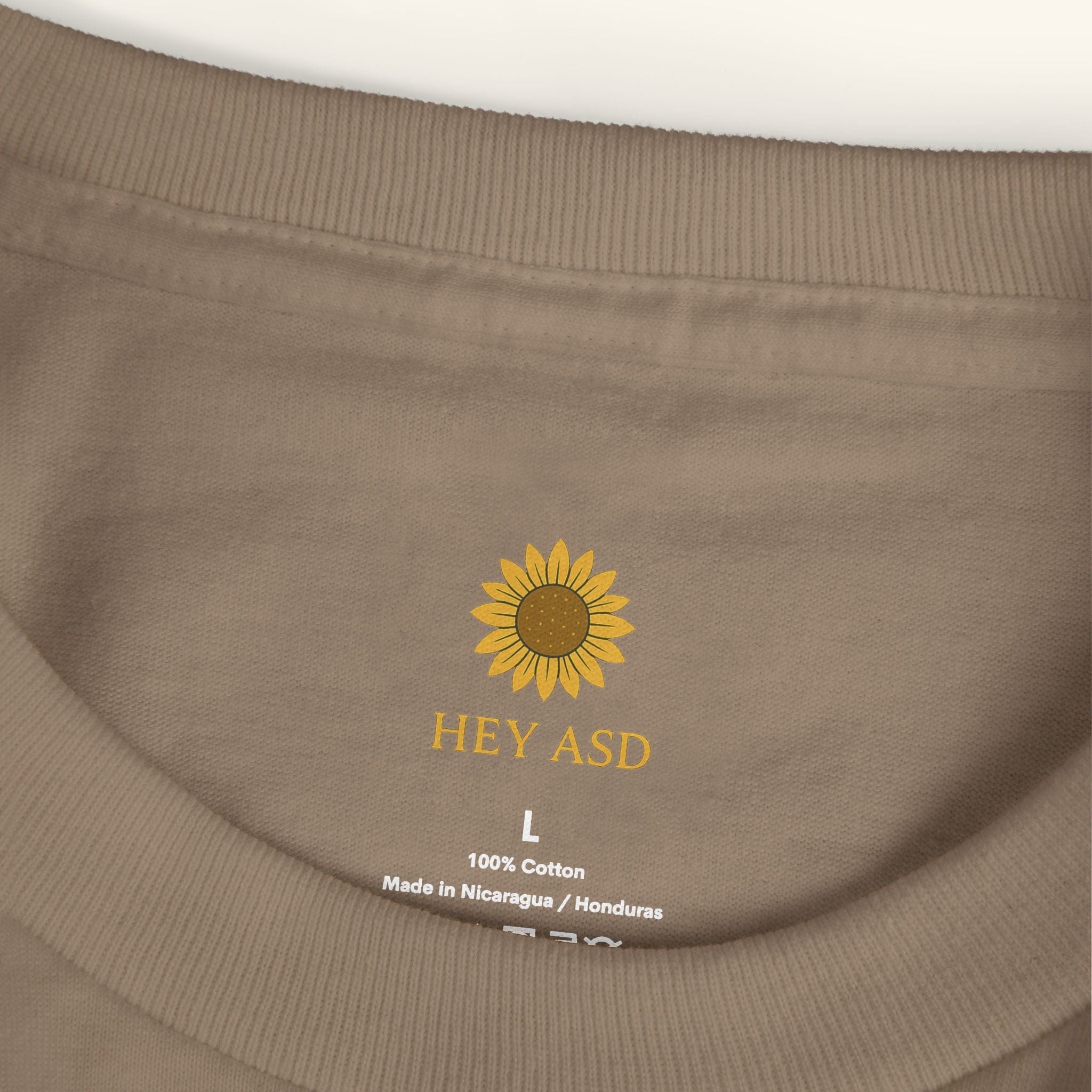Visual Stimming in Autism: What It Is, Examples & Supportive Strategies

Written by the HeyASD Editorial Team
Visual stimming is one of the most commonly observed stimming behaviors in autism and ADHD. It refers to repetitive visual behaviors—like watching spinning objects, flicking fingers in front of the eyes, or staring at patterns—that provide important sensory input. While sometimes misunderstood, visual stimming serves as a powerful coping mechanism for regulating emotions and navigating sensory overload.
For autistic people, stimming—including visual stimming—is not “bad behavior.” It is a natural way of self-soothing, providing sensory stimulation, and regulating input from an overwhelming world.
This guide explains what visual stimming is, examples in children and adults, causes, benefits, potential challenges, and supportive ways to manage or embrace it. It is designed to raise awareness, promote acceptance, and serve as a complete resource for families, professionals, and autistic adults themselves.
Looking for safe, visually soothing tools? Try our calming “Stimming Is Sacred” pillow or explore discreet stimming-friendly jewelry that offers predictable visual inputs without overwhelm.
What Is Visual Stimming?
Visual stimming is a type of self-stimulatory behavior that uses visual inputs to regulate sensory experiences. It is one category of repetitive behaviors often seen in autism spectrum and sensory processing disorders. Instead of being meaningless, these repetitive visual activities serve essential purposes: emotional expression, self regulation, and providing comfort in unfamiliar or overwhelming environments.
Common Examples of Visual Stimming
- Staring at lights, fans, or reflective surfaces
- Flicking or waving fingers in front of the eyes
- Spinning objects repeatedly
- Watching glitter jars, visual stimming toys, or flashing lights
- Rapidly flipping pages or scrolling feeds
- Tracking shadows, patterns, or visual cues
- Using visually stimulating objects like ribbons or mirrors
Tools for Safe Visual Stimming
- “Stimming Is Sacred” Pillow — gentle, predictable visual focus; comforting at home or work.
- Stimming‑Friendly Jewelry — subtle, portable options for grounding and sensory regulation.
Choose what feels calming for your sensory needs. There’s no one “right” way to stim.
Specific visual stimming behaviors may look different from person to person. What matters most is that these behaviors serve as a safe and reliable way to regulate sensory input and emotions.
Why Do People Engage in Visual Stimming?
Visual stimming is a valid way for autistic people (and many with ADHD or sensory processing differences) to feel steady, safe, and present. The same behavior can serve different purposes from moment to moment, which is why one-size-fits-all rules don’t work.
Visual stimming isn’t a problem to “fix.” It’s a sensory strategy that helps regulate input, express feelings, and prevent overwhelm.
- Sensory regulation — balancing too much or too little input by creating steady, predictable visual inputs that help regulate sensory input.
- Managing sensory overload — focusing on a single point (lights, patterns, spinning objects) to anchor attention during overwhelming external stimuli.
- Emotional expression — communicating joy, stress, excitement, or anxiety without words; a legitimate form of self‑expression.
- Self‑soothing — calming the nervous system during transitions, uncertainty, or high‑demand tasks; a gentle, portable coping tool.
- Coping mechanism — navigating busy, noisy, or visually chaotic spaces by choosing input that feels controllable and safe.
For some, visual stimming is mainly about self regulation; for others, it works like non‑verbal communication. Many individuals with autism describe it as a reliable way to manage energy, attention, and feelings in a world that can be intensely bright and busy.
Is Visual Stimming Harmful or Safe?
For most people, visual stimming is beneficial and adaptive. It helps regulate emotions, reduces stress, and offers comfort in overwhelming environments. Far from being a flaw, it is often a protective strategy that supports well-being and prevents shutdowns or meltdowns.
The question isn’t whether visual stimming is “bad,” but how we can support it in safe and respectful ways.
There are, however, situations where visual stimming may need extra care:
- Excessive visual stimming that makes it difficult to participate in school, work, or daily activities
- Harmful stimming behaviors that risk physical injury (such as pressing on the eyes or staring at the sun)
- Repetitive movements that draw unwanted attention or lead to stigma in public spaces
The goal is never to “eliminate” visual stimming. Instead, the focus should be on creating a supportive environment, providing safe alternatives when needed, and promoting acceptance. Suppressing stimming entirely can increase stress, reduce autonomy, and negatively affect quality of life.
Visual Stimming in Children vs Adults
Visual stimming appears differently across life stages:
Children with autism may:
- Wave toys or objects in front of their face
- Watch spinning objects for long periods
- Focus on shadows or repetitive visual cues
- Engage with visual stimming toys like glitter jars
Autistic adults may:
- Flick fingers or nails in stressful situations
- Stare at textures, fabric, or patterns
- Use stimming jewelry or visual materials for sensory stimulation
- Scroll rapidly through visual media as a form of regulation
Managing Visual Stimming Behaviors
When stimming is safe, the best approach is to allow it. However, in cases of excessive visual stimming or when safety is a concern, supportive strategies can help:
- Create supportive environments with reduced clutter and calmer lighting
- Offer visual stimming toys or fidgets as safe alternatives
- Teach self regulation techniques like deep breathing exercises or mindfulness
- Redirect visual stimming behaviors into safer alternatives
- Work with occupational therapy and sensory integration therapy for tailored strategies
- Use visual supports and schedules to reduce uncertainty
Offer safe alternatives like stimming‑friendly jewelry or a calming visual anchor such as the “Stimming Is Sacred” pillow. Pair these with simple self‑regulation techniques (for example, paced breathing or grounding) and practical visual supports (checklists, routines, or imagery) to reduce uncertainty.
Visual Stimming and Autism Spectrum
On the autism spectrum, visual stimming is part of a broader pattern of repetitive movements and behaviors that support sensory and emotional needs. Autistic adults frequently emphasize that visual stimming serves as both a coping mechanism and a valid form of emotional expression.
Promoting acceptance means recognizing that autism involves repetitive movements not as “symptoms to fix” but as important tools for sensory regulation and well-being.
Visual Stimming Beyond Autism
While visual stimming is often discussed in connection with autism, it is not exclusive to autistic people. Many individuals with ADHD, sensory processing disorders, and other forms of neurodivergence also engage in visual stimming behaviors. In these contexts, the function of stimming remains remarkably consistent.
Whether autistic, ADHD, or otherwise neurodivergent — visual stimming serves as a trusted way to balance sensory input, find calm, and express feelings.
Across these groups, visual stimming is often used to:
- Regulate sensory input when environments feel too stimulating or too empty
- Manage overwhelming sensory input by focusing attention on predictable visual cues
- Regulate emotions through safe, repetitive visual stimulation that restores balance
- Provide an alternative coping mechanism in busy, noisy, or uncertain settings
Recognizing that individuals who engage in visual stimming are not limited to the autism spectrum helps broaden acceptance. It shows that these repetitive visual behaviors are not “symptoms” to erase but human strategies for sensory regulation and self-care.
Creating Supportive Environments
Visual stimming becomes a challenge only when environments are unsupportive. With the right awareness and accommodations, it can be openly embraced as a natural and healthy way of regulating. Below are practical, affirming ways to promote acceptance and create environments where stimming is seen as valid and respected.
Acceptance is powerful. When we normalize stimming, we reduce stigma and allow neurodivergent people to feel safe in their own bodies.
1. Normalize Stimming in Everyday Spaces
Make stimming ordinary. Instead of asking someone to “stop,” recognize it as part of how they self-regulate. In classrooms, workplaces, and public spaces, this simple shift signals belonging.
Stimming is not a distraction; it’s a form of self-care.
2. Educate and Raise Awareness
Peers, teachers, and families often misinterpret stimming behaviors. Sharing resources about the benefits of visual stimming—from preventing sensory overload to supporting emotional expression—creates empathy and understanding.
3. Provide Visual Supports
Simple tools like visual schedules, calm imagery, or structured object placement reduce uncertainty and anxiety. These supports allow individuals to focus energy on learning, working, and connecting.
4. Create Sensory-Friendly Zones
Offer quiet areas with soft lighting, minimal visual distractions, and calming visual materials. Sensory-friendly spaces give people permission to engage in safe visual stimming behaviors without stigma.
A quiet corner, a dim light, or a glitter jar can transform overwhelm into calm.
5. Encourage Support, Not Suppression
Replace negative reactions with appropriate support. Offer safe alternatives such as visual stimming toys or grounding activities. The goal is not to remove stimming but to respect it while ensuring safety.
6. Promote a Culture of Acceptance
Beyond accommodations, we need cultural change. Celebrate neurodivergent coping strategies the same way we celebrate different languages, traditions, or identities. Acceptance means moving past “tolerance” into genuine respect.
Acceptance of stimming is acceptance of people. You cannot have one without the other.
By taking these steps, schools, workplaces, and communities can transform into places where individuals with autism, ADHD, or sensory processing disorders feel seen, safe, and included. Creating supportive environments is not just about comfort—it’s about dignity and equity.
Make Acceptance Practical
Small supports can change the day. Try a gentle visual anchor like the “Stimming Is Sacred” pillow or explore stimming‑friendly jewelry for portable regulation.
Join Hundreds of Autistic Adults Feeling
More Comfort in Their Own Skin
Use code WELCOME10 for 10% off your first order.
Start Your Comfort JourneyKey Takeaways
- Visual stimming = repetitive visual behaviors that support sensory and emotional regulation
- It is common among individuals with autism, ADHD, and sensory processing disorders
- Most stimming behaviors are safe, beneficial, and should be supported
- When needed, managing visual stimming behaviors involves safe alternatives and supportive environments
- Acceptance reduces stigma and promotes well-being for all individuals who engage in visual stimming
Related Reading
- Autism Hats Guide — identity, comfort, and sensory‑friendly choices.
- Explore more articles in the Autism Blog & Resources — acceptance‑first guides for everyday life.
FAQs About Visual Stimming
What is visual stimming?
Visual stimming is a self-stimulatory behavior involving repetitive visual behaviors such as staring at lights, spinning objects, or flicking fingers in front of the eyes. It provides sensory stimulation and helps regulate emotions.
What are specific visual stimming behaviors?
Examples include staring at reflections, tracking shadows, flipping pages quickly, and using visually stimulating objects like glitter jars or ribbons. These behaviors serve as tools for self soothing and regulating sensory input.
Is visual stimming harmful?
Most visual stimming is safe and adaptive. Harmful stimming behaviors only occur if the stim risks physical safety (e.g., eye pressing) or severely disrupts daily life.
How can you reduce or redirect visual stimming?
Focus on safe alternatives instead of elimination. Options include redirecting visual stimming behaviors toward fidgets, introducing alternative coping mechanisms like breathing exercises, or using visual supports to lower stress.
How do you manage sensory overload linked to visual stimming?
Create supportive environments that minimize visual distractions, offer quiet zones, and provide appropriate support such as calming visual materials. This helps manage sensory overload effectively.
Do all individuals with autism stim visually?
Not all autistic people engage in visual stimming. However, many individuals with autism use some form of stimming behaviors including visual to regulate sensory needs and emotions.
What are the benefits of visual stimming?
The benefits of visual stimming include regulating sensory input, reducing anxiety, providing comfort, and serving as a valid form of emotional expression.
Can therapy help with managing visual stimming behaviors?
Yes. Sensory integration therapy and occupational therapy can provide self regulation techniques and safe alternatives while respecting the role that stimming behaviors including visual play in self-soothing.
On This Page
Frequently asked questions
What is visual stimming and why do some people with autism engage in it?
How can I recognize when visual stimming is helping someone manage sensory overload?
What are some gentle autism support strategies to help someone who stims visually?
How can I create a sensory-friendly living space that supports visual stimming without causing overwhelm?
Are there calming blankets, sensory tools, or clothing options that can support visual stimming and sensory regulation?
What are some safe and positive ways to encourage alternative stimming behaviors if needed?
How can caregivers and educators best support individuals who use visual stimming to communicate or self-soothe?
What professional therapies or interventions can help with managing sensory overload and stimming behavior?
How can Autism-themed decor or sensory-friendly products be used to create a comforting environment for visual stimming?

About the HeyASD Editorial Team
Autistic‑owned • Values‑led • Sensory‑friendly design
We are autistic creators, writers, and advocates dedicated to producing resources that are practical, sensory-aware, and grounded in lived experience. Our mission is to make information and products that support the autistic community accessible to everyone, without jargon or condescension. Learn more about our team.
This article is written from lived autistic experience and an evidence-aware perspective. It is for general informational purposes only and should not be taken as medical, legal or therapeutic advice.
Always consult a qualified clinician or occupational therapist for individual needs and circumstances.

About Our Autism Blog
HeyASD isn’t just a store, it’s a calm, supportive space created by and for autistic adults. Our blog shares sensory-friendly tips, identity-affirming stories, and heartfelt resources for navigating life as an autistic person. Whether you're late-diagnosed, exploring your needs, or supporting someone you love, you're welcome here.
Thank you for reading. We hope these resources bring comfort and clarity.




































